Part 15

The Shrine In The Forbidden City -- Once a Chinese national icon, the Shrine is now a mere tourist attraction.
I've set my laptop on a bench beside some old people feeding the ducks. The brackish water sloshing at my feet smells like oil, and the famous lilies described by Alexander Petrov are gone: they're probably packed up for the winter. Right now, the Shrine doesn't look very pretty, but with a little history, I can see past the grime. This is a magnificent place.
Did you know that the lake around the Shrine cannot be naturally refilled? Owing to the dry conditions of the Gobi Desert, six millimeters of water must be added to the lake every day, and before the invention of water pumps, all that water had to be delivered by hand. Can you imagine that? Thousands of gallons of water were dragged out of wells on a daily basis, fetched by wage-slaves, and tossed into this ditch.
But that's not the most amazing thing.
In 990 AD, thirty thousand laborers dug and sealed the lake in only seven months. That manic construction project was the pride of Shanghai for centuries, and though a few modern projects have surpassed the Shrine's construction in speed, I believe that none of them have rivalled it in scope or difficulty.
Of course, in the official history books people dispute the figure of seven months. To be quite honest, I don't blame them. The figure sounds implausible, and unfortunately all the evidence for it is gone, since the lake in front of me isn't the original. The story goes a little something like this: During the city's capture by the Russians in 1179, catapult-stones cracked the first lake's clay lining, and over a few weeks the water drained into the sand. Despite protests from concerned citizens, the conquering Russian duke flatly refused to repair the lake, and it dried up. Only when the Russians adopted the Shrine as a secondary center of government did they resurface the whole thing with primitive concrete and refill it; and in doing so, they made it difficult to prove whether or not we built the Shrine as quickly as we claimed. After a while, people just stopped believing we'd done it as fast as we once thought.
Of course, if you're not a fan of history, Shanghai contains things better suited to your tastes. After all, the Shrine is just a building, an echo of the past, and for those who look to the future--well, let me pack up my laptop, and when I open it up again, I should be somewhere modern.
-- an excerpt from chan2cool's blog post, Walking Around My City, part 3
The Continued Short History of the Russo-Chinese War
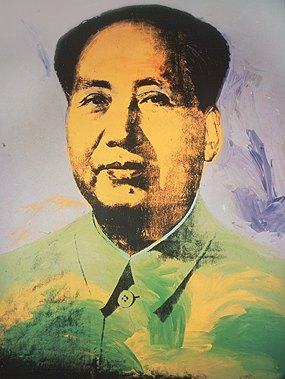
A Memory of Mao, painted by Gu Kaizhi in 1555.
Following the conquests of Shanghai and Beijing, the grand duchies of Grozny, St. Petersburg, North Delhi, and Crimea required the support of the rest of the Russian empire in order to maintain their tenuous grasp on the southern Chinese population. Recognizing this as a chance to shift the balance of power back to Moscow, the Russian crown did two things: one, it volunteered to train and arm the next generation of soldiers which would garrison the Chinese cities; and two, it paid to educate the next generation of military leaders, mostly nobles of the Denaturist schools, whose national spirits soon "burned like stars in the night."
Unlike Dukes Gaafa VI, Uvas and Godse, the Tsar's three hand-picked generals--Ilya Muromets, Provodba Svyatogor, and Viktor Vasnetsov--were not satisfied with the control of the trade routes south of the Gobi Desert. They believed that the Chinese peasants had a stronger sense of "passion for the nation" than most Russians realized, and that until Mao was dead and the Chinese empire brought under Russian rule, all the Chinese would continue to interfere in the affairs of Russian-Hindus. So they turned their eyes northward, arranged new armies, and began the long march to conquer China.
Provodba Svyatogor
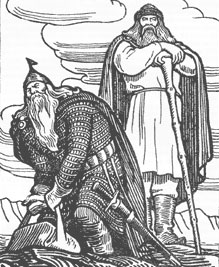
This 13th century engraving depicts General Svyatogor [left] and his subordinate, Captain Yegor [right], removing their bags to rest on the rocks at the Nanjing Mine.
Provodba Svyatogor was one of Bacon's oldest students. He was twenty-two when they met at the Great Library, and though they would later become friends, they started out as bitter rivals. Svyatogor had been a strong adherent of Inevitablist doctrine when Bacon challenged him to a public argument in the west wing of the library. Syvatogor was well-respected for his ability to recall and apply Samaj's philosophy to real life examples, but he was unprepared for a staggering genius such as Bacon. In less than three hours, the Denaturalist philosopher had reduced to shambles Svyatogor's simpleminded assumptions about human nature. The debate ended when Syvatogor screamed at Bacon and broke his podium by throwing it against a bookshelf. The library attempted to press charges, but Bacon, keenly recognizing Svyatogor's potential, paid for the damages out of his pockets, and the matter was publicly dismissed.
For a few months, Svyatogor refused to attend sessions at the library, and his patron, a noble student of Samaj, finally kicked him out onto the street. Bacon approached him on the same day, and offered to become the man's patron if he would consider learning Denaturalist philosophy. For two days Svyatogor refused Bacon's offer, until he "was so hungry that any suggestion was acceptable as long as it ended in feasting."
Svyatogor studied under Bacon for eight years until August of 1192, when Moscow recognized Duke Gaafa VI as governor of the conquered province of Shanghai. The crown sent messengers to the library to recruit intelligent men to send to China, and Svyatogor volunteered to lead a garrison to the city. Bacon was proud to see his student going to war, an event he said "signified the supreme reason and passion for the state that I cultivated in men."
After arriving in Shanghai with the garrison, he spent a year and a half leading his longbowmen through drills while waiting for futher orders from Moscow. Finally, in late December of 1193, he recieved a letter from Bacon stating that the Tsar was selecting men to lead expeditionary forces into Buddhist China, and that thanks to Bacon's influence, the Tsar was offering Svyatogor a generalship. Svyatogor called on the messenger at a stable in the middle of the night, and gave him a letter to take back to Bacon. It read, "Tell the Tsar, I accept."
Over the next nine months, Svyatogor rounded up as many veteran knights as he could find and placed them under the leadership of Yegor the Righteous, whom he made his captain. He only need a few men, but he needed the best, because his plan was daring and by some standards suicidal.
It was widely known that since the fall of Beijing, all Chinese iron was drawn from a single mine along the Malaria Coast, about fifty miles out of Port Nanjing. Svyatogor believed that by destroying that mine he could fatally disrupt the Chinese war machine. However, the mine was almost nine hundred miles away, on the far side of China. Before they could destroy it, the would have to cross the Gobi Desert, the Yangtse Jungles, then they'd have to defeat the Chinese garrisons spread along the Malaria Coast. The knights under Yegor were skeptical of the plan, but Yegor himself was eager to take the risk, and so Svyatogor had his soldiers.
With 197 horses, 202 pack mules, 147 knights and 312 servants, General Svyatogor crossed the Gobi desert in 2 years and three months, stopping often at the oases along the road. Though the conquest of Shanghai had left the countryside without law, desert bandits left him alone after only one encounter, a battle which resulted in 22 dead bandits and a single Russian horse wounded by a stray arrow.
After passing out of the desert and into the grassland bordering the southern edge of the Yangtse Jungles, his scouts discovered a new Chinese settlement by the name of Chengdu. Though it was weakly defended and completely isolated from the rest of the Chinese empire, he wisely avoided it rather than risking unnecessary casualties and endangering the campaign.
The jungle was not as clean as the desert. Yegor's raids on Buddhist banana plantations provided the soldiers with an intermittent source of starches, but the soldiers and their horses spent most of the next seven years starving under the dense canopy. Yegor wrote that the jungles were "a steaming stew of angry parasites, screaming birds, and inedible plants." Men died, mostly from diarrhea. If the sick didn't find food and water quickly--and they often didn't--then he would simply shit himself until weakness or thirst overtook him.
Historians often argue that General Svyatogor should have stayed near the roads and the grasslands to the east or west of the jungle. However, Svyatogor knew that the safer roads brought them far too close to either Nanjing or Parthian, and so he rightly stuck to the wildnerness between them until the last moment. Unfortunately, he lost over 30% of his soldiers, 60% of his servants, and nearly 2/3rds of the animals to the environment. The healthiest men were forced to walk on foot, and soon it became obvious to all of Yegor's knights that they were effectively stranded in Buddhist China.
Finally, in 1209 AD, Svyatogor emerged from the jungles just south of the hills and the Nanjing mine, and to his amazement, he saw that there were no professional soldiers garrissoned in the labor camps.
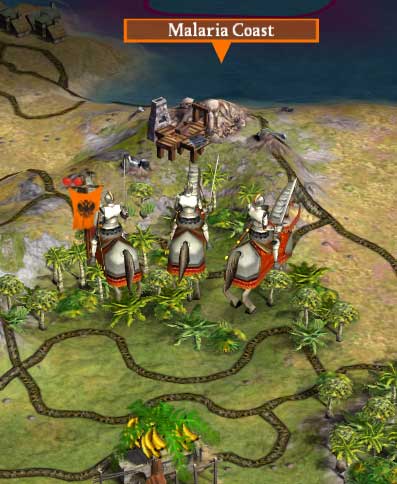
The Chinese military doctrine differed from the Russian doctrine in one key fashion: while Russians denied their peasants military training or weapons on the assumption that well-armed peasants would revolt, the Chinese required their peasant populations to hire and maintain a small force of regular soldiers. Hence, when the Russians approached the mining camp, they were nearly destroyed by an unexpected Chinese defense.Aside posted:
Actually, it took three turns to get there, which makes the date 1230 AD when I finally saw the undefended mine. It seems my estimate was right: China's military production is shit, and so Mao has left key resources without defenders. No matter who he sends onto that tile next turn, I should be able to pillage it (unless he sends an assload of troops).
Yegor and a small group of his knights were riding up a narrow ridge on the south side of the mining complex when miners armed with pikes rapidly deployed themselves along the crest of the incline. Yegor immediately saw the danger--he couldn't charge up the ridge and into those pikes without taking heavy losses and eventually clogging the incline with horses, so he ordered his men to turn back. Progress was slow however, because it was difficult to maneuver on the narrow surface, and the Chinese made it worse by throwing chunks of slag at the knights. Despite this harrassment, Yegor believed he could still retreat from the conflict with only minimal casualties, but he was wrong. A particularly large chunk of slag struck his horse over the eye, sending it into a panic. Yegor was thrown free of the animal and landed against a granite outcropping. His horse collided with another knight, and in a tangle of horseflesh and screaming men, they dropped over the other side of the ridge. The Russian formation broke. In a few terrible seconds, there were men and animals pushing down the ridge and forcing those on the edges of their formation to fall to their deaths. Capitalizing on the chaos, the Chinese crossed over the crest of the ridge and charged. Though their formation was broken and unorganized, it was more than enough force to slay the panicked Russians. Yegor himself kept a cool head and managed to get several of his knights to dismount and retreat on foot, but everyone who wasn't directly under his leadership died.
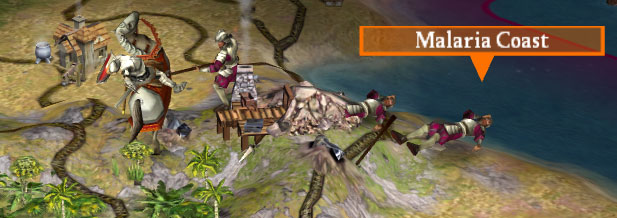
A cadre of Yegor's knights are destroyed on the initial approach.
Undeterred by this setback, General Svyatogor ordered half of his men to assemble at dusk. Several dozen of the men openly refused to follow his orders, but Yegor chastised them, saying that his knights "will have died in vain if we do not avenge them."
Svyatogor's plan involved radically unorthodox tactics. Normally, any knights encountering siegeworks were required to simply lay siege to the area until the enemy starved. However, these men were deep in enemy territory, ill, and playing against time to destroy a critical resource before the Chinese response came crashing down on them like an iron wave.
Once the men were assembled, Svyatogor had them shed their armor until they were carrying little more than leather clothes, a sword, and a shield. Then under the cover of darkness, they snuck around the right side of the ridge that Yegor had fought upon and scaled the talus situated at the bottom of an ancient rockslide. It took them five exhausting hours, but by two in the morning, they'd assembled a sizeable force of swordsmen to the flank of the ridgeline defenses. They camped there in a shallow until dawn.
At dawn, Svyatogor mounted the remaining men on their horses, and returned to scale the ridge. The Chinese defenders scouted their approach after fifteen minutes, raised the alarm, and brought the pikemen back to the defenses. Yegor waited until they began to throw slag, and then he quietly moved up with his swordsmen. Because of the noise of the ridge defense, only a few Chinese recognized the nature of Yegor's flanking maneuver, and the entire cadre of swordsmen had moved past pike range and into hand to hand combat before the Chinese were alerted. Unarmored and weakened by the climb, by illness, and by a lack of sleep, Yegor's men were ill-equipped for this fight. However, their distraction proved enough to break the defenses, and Svyatorog ordered the charge. The pikemen were broken by the horses like wood under an axe, and as they scattered, Yegor and his knights took their revenge three times over. Nanjing mine was no longer defended.
After trampling a few peasants under the hooves of the warhorses, the Chinese laborers dropped their equipment and fled. Svyatorog tried but inevitably failed to contain their escape, and he guessed that in a matter of days the Chinese would respond to this assault with a full army. Though they'd taken the mines, it was difficult to imagine how they could permanently disable the mining operation before the Chinese killed them.
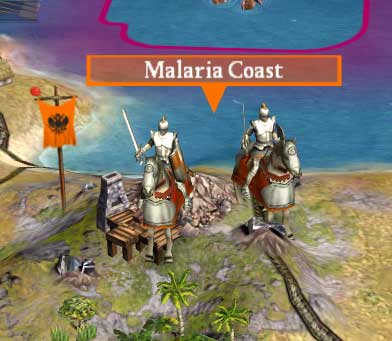
Svyatogor and Yegor stand on the mines of Nanjing after the battle.
After describing this battle, the journals of Yegor and Svyatogor end. It is believed that four days later, in a battle whose details will never be known, Yegor and Svyatogor were killed by a coordinated Chinese assault. The mine remained operational. The news of their deaths wouldn't reach Moscow until many years later, when Nanjing finally fell to Russian soldiers.
Afterwards, men scoured the site until they found the exposed bones of several knights. These were buried under a stone cairn, now called the Cairn of Yegor the Righteous and Svyatogor the Bold.
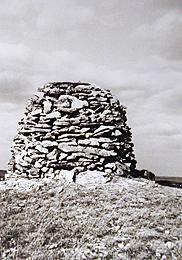
The Destruction of Huangzhou
Shortly after the capture of Beijing, a small fraction of the Buddhist population fled the city and went east, trailing after rumors of a military junta in hiding. A small fishing village of little note, Huangzhou, became their temporary base, and for two decades, they made concerted raids into the hinterlands of Beijing, encouraging the anarchy which characterised the new Russian government.
In 1229 AD, Duke Godse's successor, General Ilya Muromets, arrived from Moscow with a caravan containing twenty military instructors, twelve master craftsmen, a forge, and two tons of iron. Eager to assert his authority over the troublesome rebels, he selected Chinese volunteers and crafted a crack squad of macemen. Though the macemen were originally intended to serve as palace guards and a symbol of Russian authority, General Muromets eventually decided to use them as a tool against the rebellious Buddhists, and two weeks before the Chinese New Year, he ordered approximately one hundred and twenty macemen to march into Huangzhou.
In the first few minutes of the conflict, nobody in the village understood exactly what was happening. A hundred Chinese men were marching in regiment up the dirt path that served as the main road, and most of the people assumed that they were allies because of their ethnicity. However, when they reached the city market, one of the regimental sergeants began breaking down a fishmonger's stand while screaming over and over at the top of his lungs, "Who leads the rebels?"
And that's when the populace mobilized. In the first hour, nobody actually clashed blades with the regiment of macemen. Instead, they surrounded the market in numbers and tossed rotten food and pots of human shit at the soldiers. The soldiers kept themselves under control--they had been ordered to avoid open fighting unless fatally threatened--but eventually someone threw a bronze javelin at the macemen, and they responded by advancing on the crowd. Then the Buddhist garrison at Huangzhou sprung its trap.
As the macemen moved out from the center of the market, it became safe to draw bows on them without needing to worry about hitting civilians on the far side. Arrows halved the regiment before it entered the melee, but after contact was made, the entire square disintegrated into chaos. On average, each maceman killed six people before he died, and so the fifty or so surviving fighters managed to slay approximately three hundred Buddhist citizens before they were mobbed to death. Afterwards, the scene was famously characterized a Chinese governor, who wrote a single word on a piece of cloth taken from a dead man's clothes: "Blood."
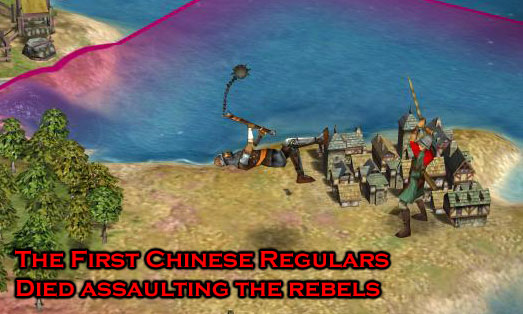
Enraged and unwilling to wait for proper Russian soldiers, General Muromets opened the stables and brought out Godse's elephant herd under the command of Captain Rastov. After surrounding the city of Huangzhou, Rastov set fire to it with burning arrows, and as men, women and children tried to escape from the conflagration, he trampled them to death under the elephants or shot them with arrows. Though several hundred Buddhists survived the attack by fleeing on fishing boats, the city--and the Buddhist rebellion near Beijing--was razed to the ground.
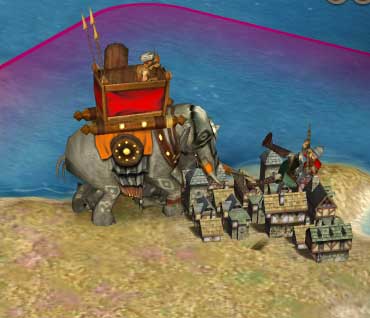
Rebellion was met with sword and slaughter.
Viktor Vasnetsov
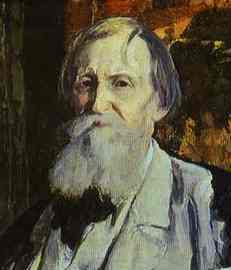
The son of a member of the Tsar's court, Vasnetsov spent much of his youth in political circles under the pampering of servants and tutors. However, his interests had always been far more worldly than his father's, and on his sixteenth birthday, he joined a Taoist scholarly sect at the Great Library. There, he men Bacon, who patronized him for a couple of years until Vasnetsov's father discovered the location of his son and had him abducted and brought back to the family estate near Crimea, where he spent several bored years drinking and womanizing.
When he heard that Duke Gaafa VI captured Shanghai and the Tsar was looking for volunteer generals, he decided on a whim to lead the military. Out of respect for his father, Peter expressed interest in Vasnetsov, but ultimately rejected his offer. Offended, Vasnetsov went to the barracks and signed up for the Russian regulars under an assumed name. He was determined to fight despite Peter's rejection.
Eventually, Vasnetsov's father caught wind of his son's whereabouts, and demanded that Vasnetsov come home immediately. Vasnetsov refused his father, stating in a letter, "I will not come home to Crimea unless I am a general or a corpse." Shortly thereafter, Vasnetsov's father pleaded with the Tsar, and Viktor became the general of the army expedition going to Guangzhou.
The approach to Guangzhou was easy. The Chinese peasants hadn't dug any siegeworks on the road from Shanghai, and so the Chinese had to flee at the first sign of the Russian knights, unless they wanted to be ridden down on the open desert. Even the dry limestone hills east of the city--despite having no roads or signs of human habitation--proved easily navigable. It was only when they reached the city itself that things became tough.
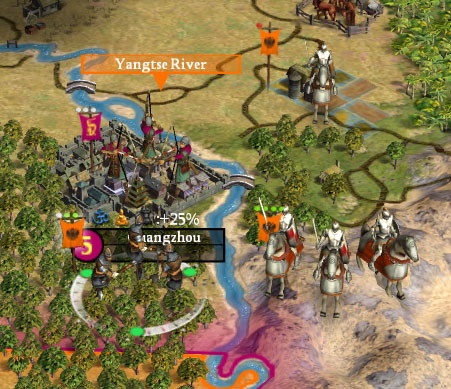
The city was built with high walls on the west bank of the unbridged, deep Yangtse. Any assault would have to cross the river by raft and land on the narrow docks beneath the defenders. From a distance, it seemed impenetrable. Nevertheless, General Vasnetsov set up both the first and second runs of St. Petersburg's catapults and began to siege the city.
Though Guangzhou was surrounded by grassland, almost all the farms were concentrated on the east side of the river; and when the harvest was made, the grain was shipped to the city in bales floated down the Yangtse. By hammering the docks with stones, Vasnetsov would choke the city by cutting off its lifeline. As a further measure, he sent knights and scouts up and down the banks of the river, in order to prevent Chinese engineers from assembling a bridge or launching a barge which could be used to break the siege.
One such attempt was met by Crimean knights near the farms in 1242 AD, two years after the siege began. During the battle, the Chinese barges were allowed to load a shipment of grain before bowmen set fire to them with burning arrows, and all that floated down to the city was a smear of ash-grayed water.
On the third year of the siege, 300 macemen from Moscow arrived in Vasnetsov's camp, and Vasnetsov saw his opportunity to take the city. He had them move fifty miles downstream and cross the river into the forests south of the walls. He then redoubled his efforts to bombard the east wall along the riverbank, while assembling a flotilla of rafts in plain view of the city. In the meanwhile, the macemen and a team of engineers ripped down trees and built a series of siege towers, which could be pushed up the flat ground south of the city.
About two weeks after the macemen had crossed the river, General Vasnetsov recieved a communication from them. The siege towers were completed and in position, and as far as they knew, the Chinese had not discovered them. Vasnetsov replied that they should begin their assault on the morning of the fifth of June.
On the morning of the battle, seasonal rains known as "Spanish Slews" came in from the northwest-west and drenched the city with hot rain. Under these muggy conditions, plate armor was absolutely intolerable, and many of the knights removed their helmets against Vasnetsov's orders. Most of the men, including the general's advisors, wanted to huddle down until everything dried out. However, Vasnetsov knew he was on the clock, and so he rounded up a hundred knights and marched them out onto his flotilla of rafts. By nine o'clock, Chinese longbownmen had lined the eastern wall, and a few were wasting arrows by shooting them into the Yangtse.
On cue, the macemen charged in from the south and began to set siege towers. Vasnetsov followed suit and set out a portion of his force onto the water. Some of the city's longbowmen rushed to defend the south side of the city, but in doing so the defenses on the east side became critically thin.
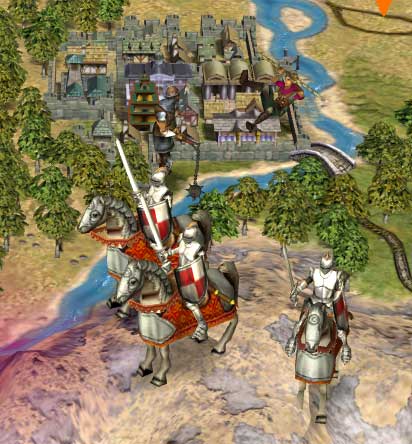
The assault that felled Guangzhou.
The macemen on the south wall fared well, at first, but as their siege towers rolled into position, the Chinese garrison proved to be well-trained defenders. Even at close range, many of the longbowmen proved capable of safely aiming and killing their targets. For a time, the death toll seemed to favor the Chinese, until finally, the small group knights landed on the docks and passed through the large breaches in the eastern wall. Even though their numbers were very few, their simple presence behind the enemy lines provided a crucial distraction, and the tide of the fight on the wall swept in favor of the Russians.
Guangzhou's defenders died, and shortly thereafter, the Chinese governor surrendered.
Mao's Raiders
In 1247 AD, a hundred and fifty horse archers were sent from the yet-to-be-conquered Guangzhou on the order of Mao. Mostly unseen by Russian scouts, they managed to reach and assault the ivory camps along the banks of the Ivory Bend before the Russians became aware of the problem. Knights under Lord Kaabkho were sent out of Shanghai to chase down and destroy these pillagers.
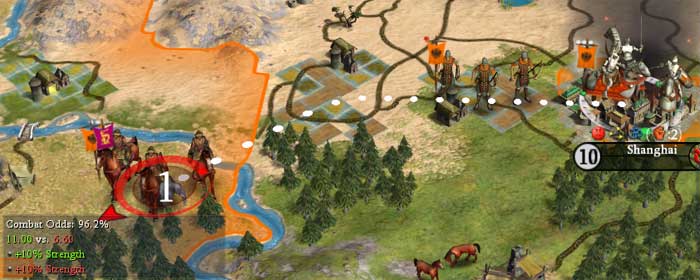
The route Kaabkho took while chasing down the Chinese pillagers.
Aside posted:
Look at the importance of ubiquitous roads and high mobility. These Chinese units would provide a lot of trouble if it took me three or four turns to reach them, but thanks to these roads and the high movement of my knights, I can hit them immediately.
Also, look at that awesome advantage. 96% chance to win!
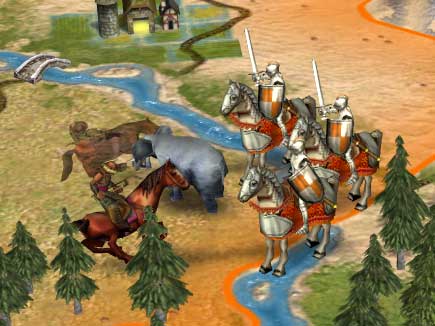
Lord Kaabkho rode into the Chinese encampment in the afternoon, and caught them completely unprepared. After taking thirteen casualties, most of the horsearchers surrendered. Not a single Russian suffered a single wound as a consequence of the assault.
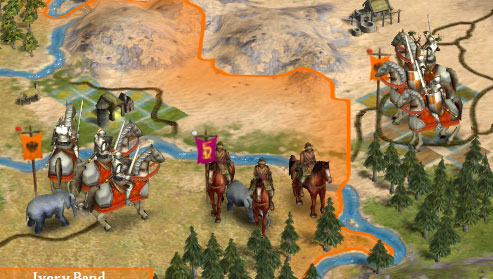
After interrogating several of the prisoners, another encampment was identified, and Lord Kaabkho's forces were moved into position to take them out.
The Trouble With Spain

In 1252 AD, Mao's messengers urged Buddhist Spain to respond to the capture of Buddhist Guangzhou. Russia already suffered a terrible relationship with Spain thanks to it's highly intolerant theocratic government, but Spain's Queen reached dizzy offending heights when she demanded that the Tsar pay reperations for his "crimes" against the Buddhists by train Buddhist craftsmen (suspiciously, Spanish craftsmen) and organizing guild halls throughout Spain.
The Tsar responded by sending a letter to the diplomat of Spain: "Leave, and do not return for twenty years." Communication was cut off, and for the duration of the Russo-Chinese war, Queen Isabella's protests would be ignored.
So far...Aside posted:
She asked for GUILDS? Not only is Guilds expensive, but it gives her knights, which for Spain means that she'd be able to make Conquistadors. I hardly need her running up my ass with a conquistador swarm while I'm still taking China, so I'm refusing her request until I've teched to a proper anti-knight unit (like rifles!)
Yeesh, this one got longer and longer. It'll have to end here, and I guess there will be a part three. I'll try and cut down on the narrative a bit in the next non-war updates, in order to speed up the writing process and to create a better turn-to-update ratio. However, I think I'll keep writing complex war posts, since war is definitely an event worth concentrating upon.